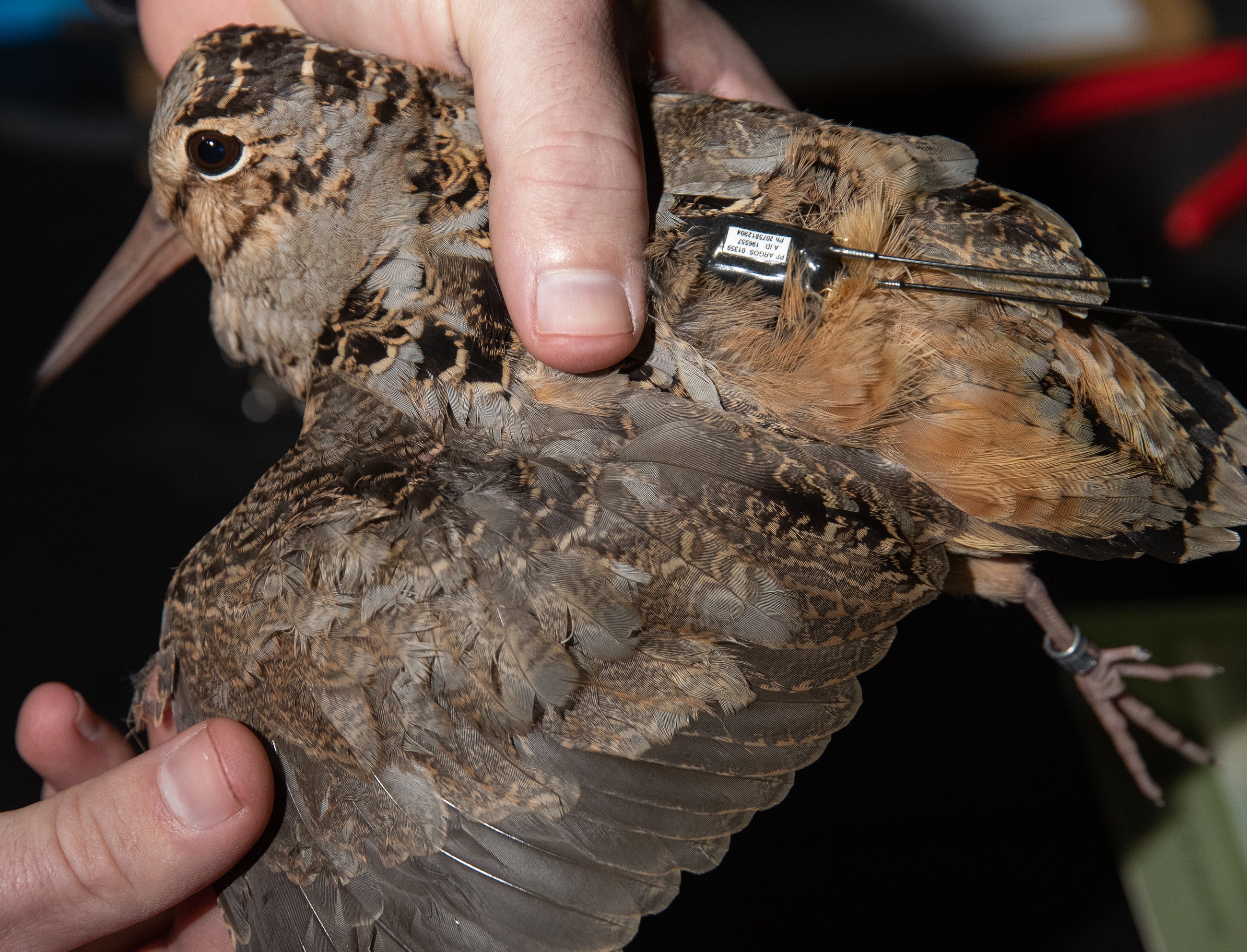By DAVID RAINER, Alabama Department of Conservation and Natural Resources
Seth Maddox will head out in February with other Division biologists to do some woodcock hunting. Yes, that is after the woodcock hunting season closes on January 31, but Maddox will not be using a conventional harvest tool. He will be wielding a long-handled dipnet.
Maddox, the Alabama Wildlife and Freshwater Fisheries (WFF) Division’s Migratory Gamebird Coordinator, will be on a mission to continue a woodcock tagging program to determine migration routes as well as conduct genetic studies on the birds also known as timberdoodles.
The woodcock is a migratory bird similar in size to the bobwhite quail but with a long, slim bill. The birds winter in the Southeast, which means Alabama will have a population of woodcock during the winter hunting seasons. As soon as it starts to warm, woodcock head north to their breeding grounds.
Maddox and WFF are working with the Eastern Woodcock Migration Research Cooperative to trap birds and attach transmitters that will track movement. For the first time since 1985, woodcock were trapped in 2020 in Alabama to become part of the study, which is spearheaded by the University of Maine.
“The project started about four years ago,” Maddox said. “The Cooperative was interested in migration patterns. They began putting transmitters on birds in the fall for their migration to the South. Here, we started putting transmitters on birds in the winter, following their spring migration to the North.
“These studies will narrow down key factors, like stopovers on the migration routes. It will determine if they have to travel farther because the habitat has been degraded or lost over the years.”
In February 2020, Maddox and crew went afield with spotlights, a thermal camera and the long dipnet.
“Once we locate the woodcock, we use the spotlight to try to disorient it for a minute,” he said. “We move forward, shaking the light to get close enough to catch the bird with the net.
“It’s not quite like a snipe hunt, where you have a cloth bag or burlap sack,” he said, referring to the prank where some unsuspecting individual is left in the middle of the woods holding the bag.
Maddox said last year they saw hundreds of woodcock, but they proved very difficult to capture.
“We ended up catching 13 birds,” he said. “We had seven transmitters to deploy, and we deployed all seven. We put four transmitters on females and three on males. The transmitters (less than the size of a quarter) on the females will give us information on nest success on the breeding grounds.
“We also took feather samples to do isotope analysis to determine geographic origin. You can look at the carbon in the feather and see where the bird was hatched. We also took blood samples for genetic analysis to determine population connectivity.”
The woodcock population is confined to the Eastern U.S., bordered by the Mississippi River to the West, the Canadian Provinces of Manitoba, Quebec and Novia Scotia to the north and Florida to the south. Maddox said where the prairie starts to the West is where the woodcock population ends. One of the birds tagged in Alabama last year traveled 2,100 miles into Manitoba. The woodcock are managed in two management regions, the central and eastern. Alabama is in the central management region.








